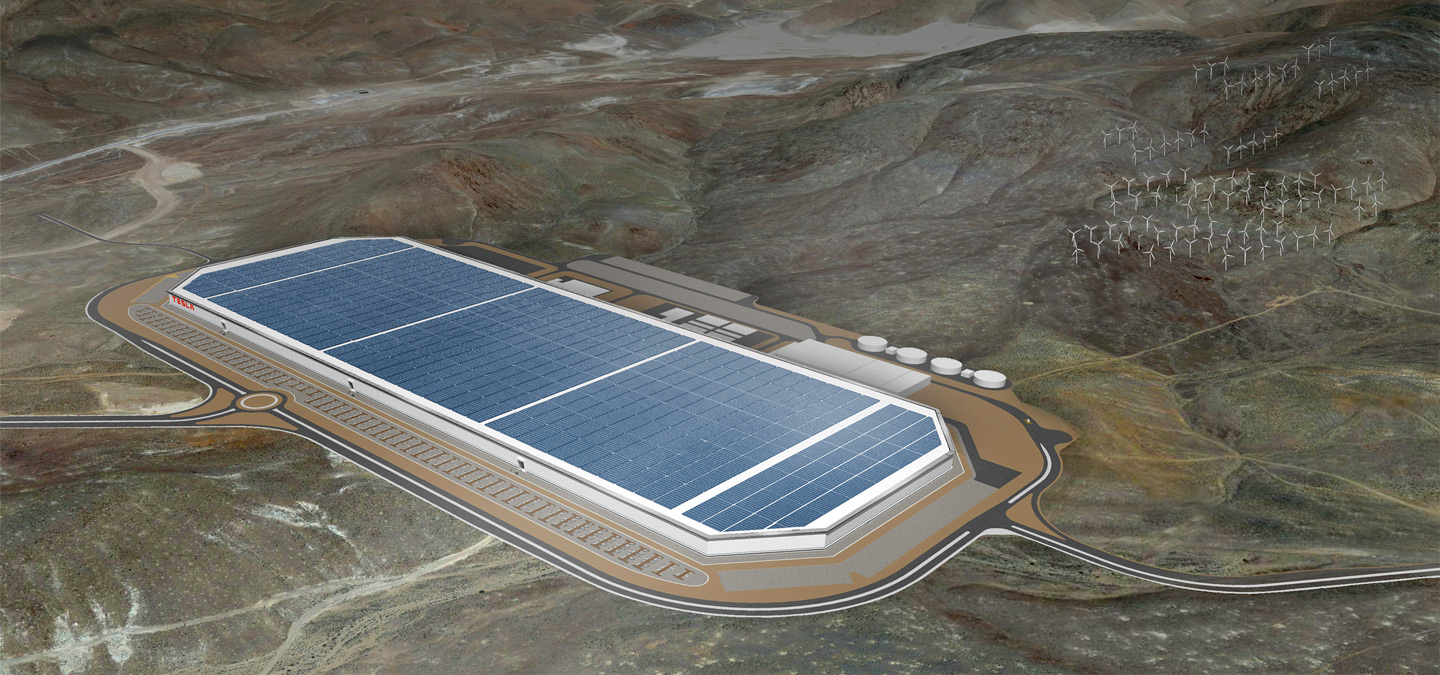
The race to design the best, fastest and more autonomous electric vehicle (EV) is on, with big auto player Tesla currently building a $5 billion lithium-ion battery factory in Nevada, US.
Panasonic has also tapped into Tesla’s electric dream and is investing $1.6 billion in the Gigafactory.
The Japanese company expects sales related to smart car technology to nearly double by 2019, representing 25% of the company’s total revenue, up from today’s 15%.
This year, Panasonic predicts car related business revenue to top $11 billion. By March 2019, it expects this to reach up to $85 billion in revenues.
Tesla and Panasonic are the sole investors in the Reno based factory to date. Tesla has also entered conditional agreements with Pure Energy Minerals, Bacarona Minerals and Rare Earth Minerals to acquire lithium hydroxide for the Gigafactory.
The automaker has received a tax incentive package worth over $1.3 billion by the State of Nevada, allowing it to operate tax free for a decade and with reduced taxes for another ten years.
Last August, the company also reached out to local utility companies NV Energy and Nevada Public Utilities Commission to discuss electric rate incentives for the Gigafactory.
Panasonic Corp. President Kazuhiro Tsuga told MarketWatch: "We are sort of waiting on the demand from Tesla. If Tesla succeeds and the electric vehicle becomes mainstream, the world will be changed and we will have lots of opportunity to grow."
Construction works have started ahead of schedule, with production expected to start in Spring 2016. In a statement, Tesla said: "We have accelerated plans to begin cell production for Tesla Energy products at the Gigafactory by the end of 2016. This is several quarters ahead of our initial plan."
Tesla expects the initial Nevada plant to produce 35 gigawatt-hours of cells and 50 GWh of battery packs each year by 2020.
The goal of the factory, which is being built in eight phases, is to increase Tesla’s production from around 35,000 vehicles today to 500,000 by 2020.
The company, who recently opened its first car show in London, also plans to use the factory to boost its Model 3 car, a $35,000 version of its mainstream Tesla S. The 200-mile autonomous car is expected to be launched in 2017 and expand electric vehicles outreach to a wider consumer base.
Adding to its growing portfolio of EVs, Tesla has also recently unveiled the Model X, its top of the range vehicle to date with a greater size and body complexity than the Model S.
Tesla’s CEO, Elon Musk has also hinted that company might be launching a new vehicle, the Model Y, when the full roll-out of Model 3 takes to the road.
In a tweet from October, later deleted by the CEO, he said that "there will be a Model 3 and a Model Y".
The company claims that by 2020, the year when the factory is expected to be fully operational, it will be producing more lithium-ion batteries than all other battery manufacturers combined.
The Tesla-Panasonic 5.5 million sq ft factory will also be 100% powered with renewable energy harvested from giant wind and solar farms deployed in the Nevada desert in the facility’s land.
Everything used in the Gigafactory will also be recycled, including batteries that will be made from old trains, according to the company.
Tesla has also spent $16 million on the factory’s foundation to withstand earthquakes and avoid interruptions in the production line.
On the first week following the announcement that it would be building the factory in Reno, Teslo received $800 million worth of orders by customers-to-be.
With this in mind, and a growing market expected to reach 20 million EVs by 2020, Musk has also hinted that the company might be looking into building more Gigafactories.
According to Bloomberg, Tesla is possibly looking at investing in a second factory in Japan. The country ranks second after North America as a source of parts for Tesla’s vehicles.
However, as EVs are set to become more main stream, especially after the push for governments and companies from all over the world at COP 21 in Paris last year, manufacturers have also been urged to not forget an essential component for electric powered vehicles: charging docks.
Dr. Kevin Curran, senior member of the IEEE, told CBR: "Electric smart cars on the roads will increase so a key component of future intelligent transport infrastructures will be support for charging stations.
"This is crucial as currently many charging stations are part of networks run by service operators however quite often users can only charge at points that are part of their network and this lack of roaming between networks is inhibiting electric vehicle sales."






